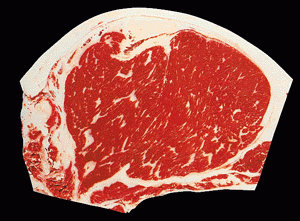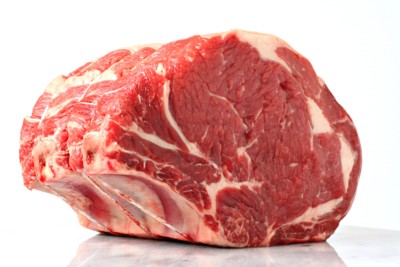The term “prime rib” for a certain cut of beef roast was first used by Charles Ranhofer, the chef de cuisine at the world famous Delmonicos in New York from 1862 to 1896. The term was in use for at least forty years before USDA grading. In 1897, Ranhofer wrote the book The Epicurean, which was the standard reference for decades for any chef aspiring to be world famous. In the book, he notes that the “prime rib section” includes the portion from the sixth to the twelfth ribs, and no other ribs. The fifth rib forward is part of the chuck and the thirteenth rib backwards is part of the loin. Ranhofer’s definition holds to this day.
When buying a prime rib roast, you of course want the highest grade possible, which is USDA Prime. Unfortunately, only 20 percent of beef cut in the U.S. is graded Prime, and most of that goes to high-end restaurants that specialize in beef. Some high-end grocery stores and butchers stock Prime beef–ask your for it at your market–but most likely you will be buying Choice grade, which is still excellent. Here are some tips on buying the roast. Avoid buying a roast on display in the meat section unless it has a packaging date of the same day you’re buying it. Instead, ask the butcher to cut one for you and tie it. Never buy a roast that has been injected with flavorings or tenderized. Ask the butcher if the roast has been dry-aged by hanging in a cooler to dry out. If you are anti-fat, don’t even think about buying prime rib because the roast should be well-marbled with thin lines of fat running through it. The marbling gives the roast its unique flavor. Big chunks of outside fat (as shown in the photo), the steer’s equivalent of lard in a pig, should be trimmed. Always buy bone-in rib roasts because you will be cooking those ribs later on the grill.
If you want to know more about this most excellent cut of beef, read on here.
Latest posts by Dave DeWitt (see all)
- Enchiladas Verdes con Chile Pasado - 02/08/2023
- Smoked Oysters with Ancho Chile Sauce - 01/13/2023
- Machaca Sierra Madre - 01/11/2023







